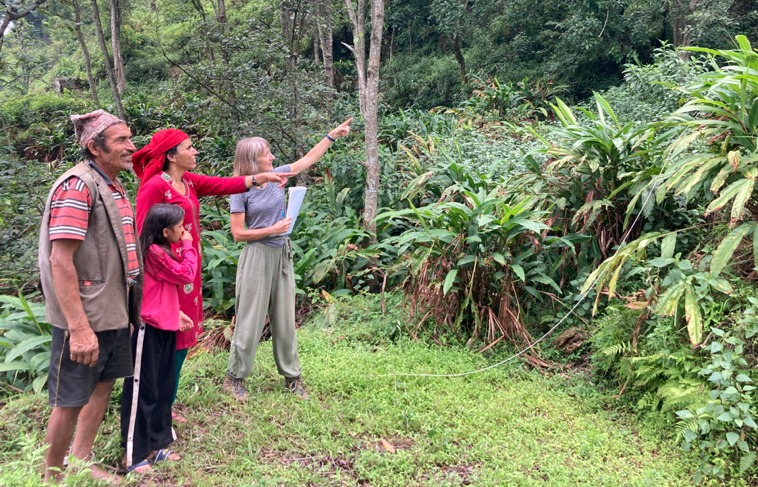

Notes from the field in Nepal
July 14, 2022

This month we have had the pleasure of following the fantastic experience of 2021 Crawford Fund Student Awardee Nicola McGunnigle, a PhD Student from the University of Adelaide, who has been “in the field” in Nepal undertaking her research into Enhancing Livelihoods from Improved Forest Management in Nepal.
Nicola’s words and images have featured across the Fund’s Instagram platform and have captured perfectly the Student Award experience we know and love – an energetic, enthusiastic and rewarding opportunity to get out into the world and live and breathe the research being undertaken beyond the lab and the desk!
We will present Nicola’s research report in the coming months, but for now, a brief snapshot of Nicola’s experience is presented below in her own words and pictures…
What an amazing start to my time in Nepal! I seriously had to pinch myself on my first day as I taxied amidst the crazy chaos in Kathmandu to my first meeting. After a few days in the city, I have completed my first leg of field work, talking to farmers in Kaskikot and Pame, Kaski district, about the potential benefits of regenerating forest on their abandoned agricultural land.
There are many reasons for leaving the land uncultivated – some of it is far from home, or road access, or water for irrigation. Many young people have migrated to the towns and cities for work and education; farming is hard work, and production from the land in the middle hills is low. But they all met us with a smile and time to share their stories as well as chiya and snacks.

What I have really enjoyed seeing in the field is how the farmers warm up in conversation. At first, they might be wary, or thinking we have a project that offers them something, but after some time they ease into conversation and the stories flow. Their land has been abandoned for many reasons, and it’s not useful…except for fodder for their livestock, perhaps some timber to build a goat shed, oh, and firewood too! Some land is lush with regenerating species that they use as well as plants that have potential to mature for income purposes, or medicinal properties.

I met the most inspiring farmer, Ram Maya, an hour’s walk from Bandipur in the Tanahun district. She had worked with WWF’s Hariyo Ban (“Green tree”) project, initiating planting income generating species on abandoned agricultural land, such as broom grass and cinnamon. However, she has struggled to gain support from the villagers who are yet to see the longer-term income benefits. Until then she has taken a job in the town, but she returns each day to her own land where she is totally self-sufficient. She also has many beehives and sells the fresh honey. I can assure you that it was super tasty, straight from the comb!
I’ve done a LOT of walking to visit farmers in many villages in remote areas. There are many reasons for not fully utilising their land, but the primary ones are due to lack of labour and increasing monkey conflict. There was even a “chase” going on as I interviewed a farmer who had to dash off to help his neighbours! Some farmers have been enterprising with species that are not targeted by monkeys, such as cardamom, turmeric and Sichuan pepper.

And finally…what I love most about field work is meeting people and hearing their stories. There may be an initial suspicion, or want of a gift, but as the conservation warms up the offerings do too. While some farmers prefer to work on the land to produce crops for food, others enjoyed the benefits from forest that was regenerating: less labour was required and they still benefitted from the fodder species to feed their livestock, medicinal plants and timber from more mature trees.

More often than not we would sit and chat on a balcony over tea and a snack, either before or after visiting their forest. Sometimes it was hard to say goodbye – and sometimes I said ‘pheri betaula”, see you again, because it would be wonderful to revisit this land in a few years and see the role of forest regeneration in their lives and how communities are continuing to adapt to a changing landscape.





 0
0